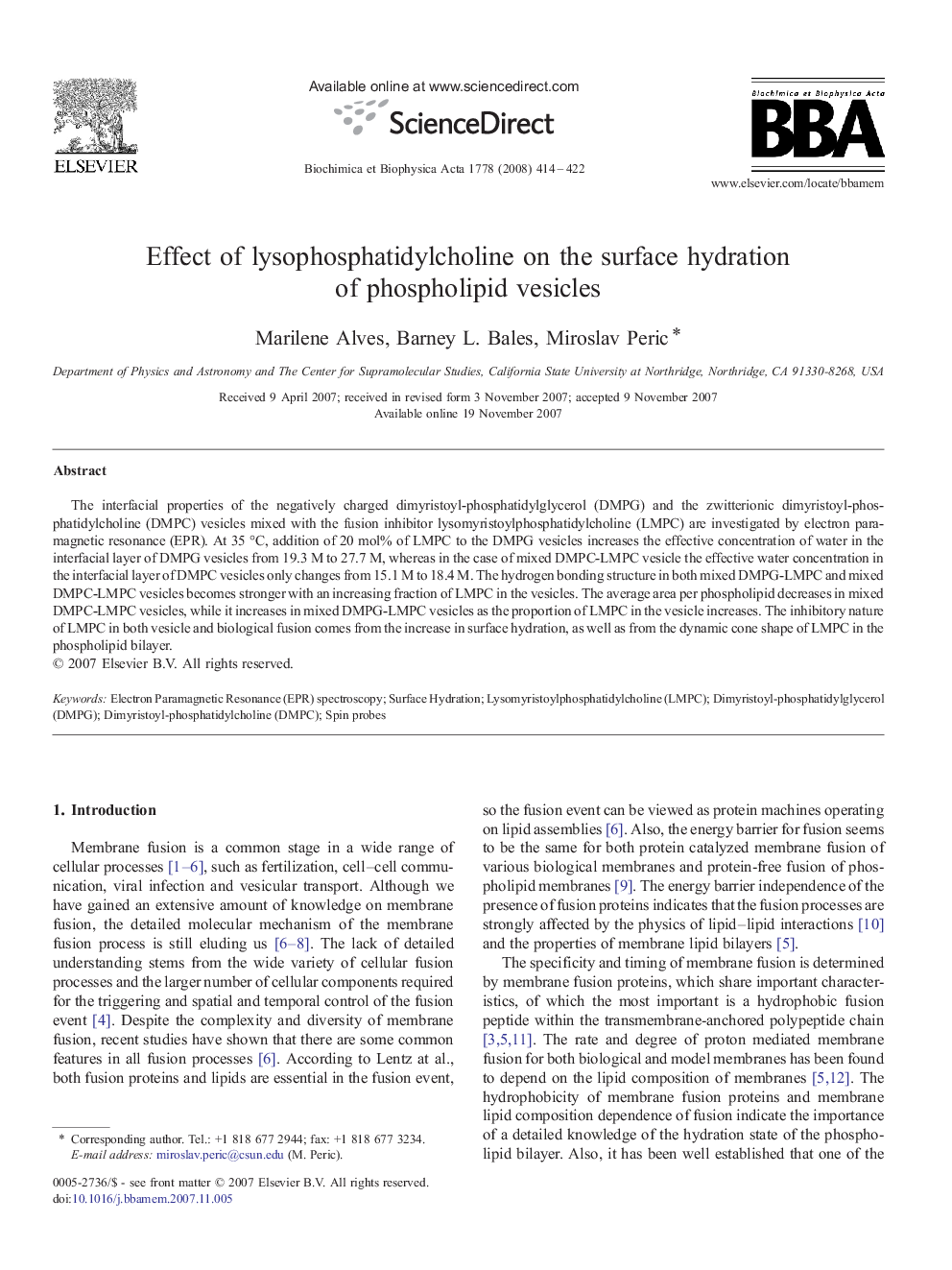| Article ID | Journal | Published Year | Pages | File Type |
|---|---|---|---|---|
| 1945499 | Biochimica et Biophysica Acta (BBA) - Biomembranes | 2008 | 9 Pages |
The interfacial properties of the negatively charged dimyristoyl-phosphatidylglycerol (DMPG) and the zwitterionic dimyristoyl-phosphatidylcholine (DMPC) vesicles mixed with the fusion inhibitor lysomyristoylphosphatidylcholine (LMPC) are investigated by electron paramagnetic resonance (EPR). At 35 °C, addition of 20 mol% of LMPC to the DMPG vesicles increases the effective concentration of water in the interfacial layer of DMPG vesicles from 19.3 M to 27.7 M, whereas in the case of mixed DMPC-LMPC vesicle the effective water concentration in the interfacial layer of DMPC vesicles only changes from 15.1 M to 18.4 M. The hydrogen bonding structure in both mixed DMPG-LMPC and mixed DMPC-LMPC vesicles becomes stronger with an increasing fraction of LMPC in the vesicles. The average area per phospholipid decreases in mixed DMPC-LMPC vesicles, while it increases in mixed DMPG-LMPC vesicles as the proportion of LMPC in the vesicle increases. The inhibitory nature of LMPC in both vesicle and biological fusion comes from the increase in surface hydration, as well as from the dynamic cone shape of LMPC in the phospholipid bilayer.
